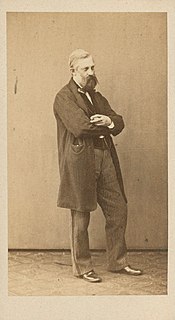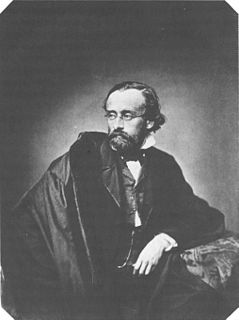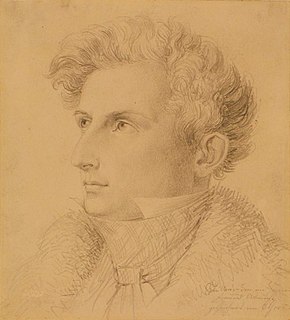Biography
Following the early death of his parents, his relatives made it possible for him to study at the State Academy of Fine Arts in Stuttgart, with Gottlob Friedrich Steinkopf and Johann Friedrich Dieterich. In 1846, he went to Munich, where he became a private student of Eduard Schleich, and often visited the Alte Pinakothek to study the works of the Old Masters.
Together with Friedrich Salzer and Richard Zimmermann, he visited the artists' colonies at Polling and Eberfing. After that, he devoted himself entirely to landscape painting; especially forest scenes. He also paid a visit to the Exposition Universelle (1855), where he first came under the influence of the Barbizon school.
Later, he accompanied Schleich and Carl Morgenstern [ de ] on study trips to France, Belgium, and the Netherlands. He also made trips to Italy in 1857 and 1872, and spent several months in Bosnia in 1881.
He received a state pension from King Ludwig II of Bavaria, and was awarded the Knight's Cross of the Order of the Crown by King Charles I of Württemberg.

Eugen Gustav Dücker was a Baltic German painter, in the Romantic atyle, associated with the Düsseldorfer Malerschule.

Karl Wilhelm Hübner was a German landscape and genre painter, in the Romantic style.

Christian Ernst Bernhard Morgenstern was a German landscape painter. Morgenstern is regarded as one of the pioneers in Germany of early Realism in painting. He gained this reputation in Hamburg 1826-1829 together with his contemporary Adolph Friedrich Vollmer while both were still studying; from 1830 onwards, Morgenstern, together with Friedrich Wasmann, Johan Christian Dahl and Adolph Menzel, introduced Munich to Realist painting.

Albert Kappis was a German painter and lithographer specializing in landscapes and genre motifs.

Johann Friedrich Voltz was a German landscape and animal painter of the Munich School.

Eduard Schleich was a German painter. He is generally referred to as The Elder to distinguish him from his son Eduard, who was also a painter.

Edward Cucuel, was an American-born painter who lived and worked in Germany.

Joseph Petzl was a German genre painter of the Biedermeier school. He has left a collection of drawings documenting his everyday life, love affairs and travels, now in the Münchner Stadtmuseum.

Count Stanislaus Friedrich Ludwig von Kalckreuth was a German painter who specialized in mountain landscapes.

Hans Hassenteufel was a German painter of portraits and female nudes.

Ludwig Willroider was an Austrian landscape painter and etcher.

Eduard Schleich, known as The Younger was a German landscape painter.

Dietrich Langko was a German landscape painter; especially known for his winter scenes.

Ludwig Gustav Voltz was a German landscape and animal painter. He also did illustrations.

Carl Friedrich Heinzmann was a German landscape and porcelain painter; also known as a lithographer.

Carl Gottfried Eybe (1813–1893) was a 19th-century German painter, lithographer and sculptor.
Hubert Haider (1879–1971) was a German landscape painter.
Johanne-Catharina Tecklenborg was a German painter.

Carl Blos was a German portrait, landscape and genre painter.

Johann Heinrich Höfer was a German landscape and portrait painter.
This page is based on this
Wikipedia article Text is available under the
CC BY-SA 4.0 license; additional terms may apply.
Images, videos and audio are available under their respective licenses.


















